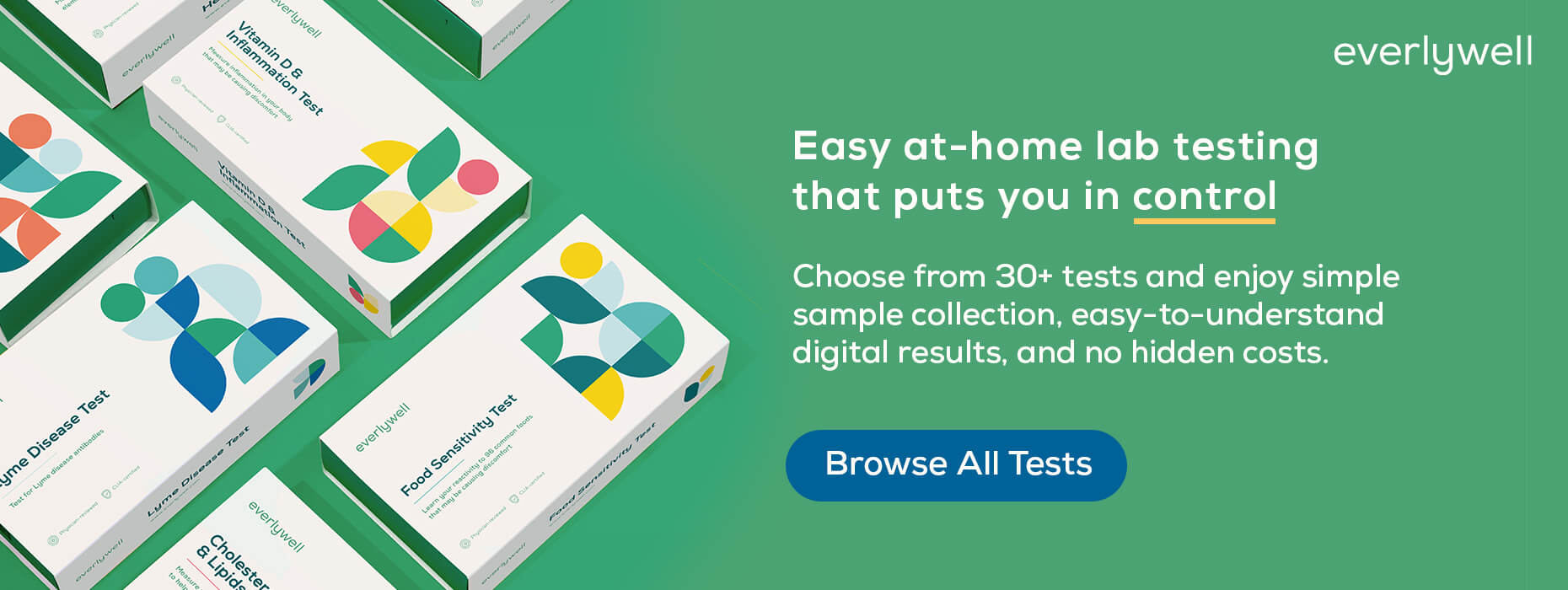
What are the signs of gluten sensitivity?
Medically reviewed on May 4, 2020. To give you technically accurate, evidence-based information, content published on the Everlywell blog is reviewed by credentialed professionals with expertise in medical and bioscience fields.
Wondering if you could be experiencing symptoms of gluten sensitivity? Feelings of a “foggy mind,” abdominal pain, bloating, and headaches are among the signs of gluten sensitivity that people with non-celiac gluten sensitivity report (though gluten sensitivity symptoms can vary greatly from person to person).
Non-celiac gluten sensitivity (NCGS), or gluten sensitivity, may cause symptoms that are similar to those of celiac disease—but people with non-celiac gluten sensitivity don’t test positive for celiac disease (which is a hereditary autoimmune disorder that damages the small intestine) or wheat allergy. (Gluten is one of the main proteins in wheat, rye, and barley.)
Here, we’ll take a look at some of the commonly-reported symptoms of non-celiac gluten sensitivity—and discuss possible next steps to take.
Signs and symptoms of gluten sensitivity
Gastrointestinal-related gluten sensitivity symptoms
There are a number of gastrointestinal symptoms that can be related to the foods we eat, including gluten-containing foods.
- Bloating is an uncomfortable feeling of fullness that comes on after eating and is a possible sign of gluten sensitivity. But it’s important to keep in mind there may be other foods, or other factors, contributing to bloating. (Related: What foods cause bloating?)
- Abdominal pain can happen for many possible reasons, and it may be one of the signs of gluten sensitivity.
- Diarrhea and constipation are other symptoms that may be related to gluten sensitivity.
Having occasional digestive issues can be normal, but if you experience gastrointestinal symptoms frequently, sensitivity to gluten may be the reason why. Other conditions to consider as possible causes of gastrointestinal symptoms include irritable bowel syndrome (IBS), inflammatory bowel disease (IBD), lactose intolerance, and celiac disease.
Non-gastrointestinal signs of gluten sensitivity
Feeling fatigued or foggy-headed throughout the day? These symptoms can be due to a variety of possible health conditions, but some people report fatigue and brain fog as symptoms related to their gluten sensitivity.
People with non-celiac gluten sensitivity often experience headaches, as well. Skin issues—which can resemble eczema or psoriasis—are another possible symptom of gluten sensitivity. Some researchers have also discovered potential links between joint and muscle pain and gluten sensitivity.
Next steps
If you’re experiencing any of these symptoms, and you feel they may be connected to something in your diet, it’s a good idea to speak with your healthcare provider so they can rule out celiac disease, wheat allergy, and other conditions.
You can also try a temporary elimination diet to see if gluten-containing foods could be connected to your symptoms. During the temporary elimination diet, you remove all gluten-containing foods from your diet, and—at the end of 4 weeks—reintroduce a gluten-containing food to potentially determine if gluten is a culprit for your symptoms.
If you’re planning to try a temporary elimination diet to identify your sensitivities, consider taking the Everlywell at-home Food Sensitivity Test. This test checks your IgG antibody reactivity levels to 96 common food proteins—including gluten. It may help determine if gluten is a main suspect to target first in your elimination diet—or if there are other foods you might want to focus on eliminating at the start of the diet.
(Note that if you’re already on a gluten-free diet, gluten reactivity levels may be either low or normal in your results. That’s because recent exposure to the food is needed for gauging how your antibodies actually react when that food is a normal part of your diet. So in the 4–6 weeks prior to taking the test, it’s advised to regularly consume the foods you’re interested in testing— although it’s never encouraged to resume eating a food that may be behind severe symptoms.)
The at-home Food Sensitivity Test may help you get to the bottom of your symptoms relatively quickly, since you won’t have to eliminate foods from your diet at random—but can instead use your results to guide your elimination diet.
Related content
4 possible dairy sensitivity symptoms
Benefits of keeping a food journal
References
1. Non-Celiac Gluten/Wheat Sensitivity. Celiac Disease Foundation. URL. Accessed May 4, 2020.
2. Roszkowska A, Pawlicka M, Mroczek A, et al. Non-Celiac Gluten Sensitivity: A Review. Medicina (Kaunas). 2019;55(6):222. doi:10.3390/medicina55060222
3. Catassi C, Elli L, Bonaz B, et al. Diagnosis of Non-Celiac Gluten Sensitivity (NCGS): The Salerno Experts' Criteria. Nutrients. 2015;7(6):4966‐4977. doi:10.3390/nu7064966
4. Bonciolini V, Bianchi B, Del Bianco E, et al. Cutaneous Manifestations of Non-Celiac Gluten Sensitivity: Clinical Histological and Immunopathological Features. Nutrients. 2015;7(9):7798‐7805. doi:10.3390/nu7095368
